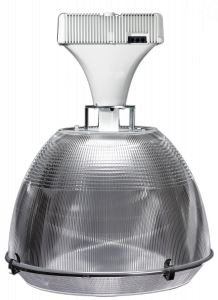Let there be lumens

Learned something yesterday: It is possible to geek out as much about lighting technology as it is about information technology. Here's what I am talking about: Turns out the biggest potential downside of LED lighting, aside from the cost, is the fact that they shed fewer lumens per watt than other lighting options.
What this means to the naked eye is pretty simple: the light is less bright. I'm not going to start citing figures about how much less or more because it depends on the lighting situation and the product you are considering or comparing, but if you are considering some sort of lighting efficiency initiative, you can't just look at the numbers as far as electricity. You'll need to look at the impact of your lighting efficiency project on productivity.
Here's an example of what I mean, based on an interview I had this week with one of the emerging players in lighting controls technology, Lumetric (formerly HID Labs). The company, based in Fremont, Calif., sells something called the SmartPOD, which it touts as a plug-and-play replacement for legacy HID lighting. 
Greg Davis, chief technology officer and founder of Lumetric, says one of the company's early clients was able to eliminate a quality-control step at the end of its manufacturing process because the improved brightness of SmartPOD allowed employees in the facility to catch issues earlier in the process. So, in addition to the electricity saved by the retrofit, the company was able to cut the cost of re-dos.
"The great equalizer is lumens per watt," Davis says.
According to Lumetric, SmartPOD produces 90 to 104 lumens per watt, compared with 70 to 94 for fluorescent and 65 to 70 for LED. That's quite a range of difference. Another differentiator: They can work in extremely hot or cold environments.
Another Lumetric client, Kelly-Moore Paints, has saved about $15,000 per year in electricity costs by investing in the SmartPODs, which is about a 83.5 percent reduction. The payback period for its investment should be about seven months.
Another smart lighting technology company, Lumenergi of Newark, Calif., is likewise focusing on the whole issue of productivity and comfort in its messaging. Lumenergi CEO Michael D'Amour says his company has focused on accommodating and adjusting for lighting decay with its intelligent lighting control technology called Netlight. D'Amour says his technology can help save between 50 percent and 70 percent of lighting-related electricity costs in commercial buildings. Netlight can control LEDs or fluorescent, about 80 percent of what is currently installed, according to D'Amour.
One thing to remember when designing for a retrofit is to accommodate for lighting decay over time, the decrease in brightness as a lamp ages. "You are going to end up overlighting that space unless you know how much a light has decayed," he says. So, that may mean your "100 percent" levels at the beginning of a bulb's life might actually mean that the lamp is set only to produce 93 percent.
Lumenergi just scored a project with BNY Mellon to outfit its Oriskany, N.Y., facility. The project was made possible through a rebate from National Grid's Large Commercial Custom Lighting program. It is part of the bank's quest to energy Energy Star and LEED for Existing Buildings certifications for the facility.
While I'm on the topic of lighting efficiency, here are other developments from this week alone:
- Eco-story, which makes commercial LED lighting technology, has announced that the Timberland Co. has saved about $100,000 in electricity as part of a project in which it retrofitted 50 Timberland stores with 10 watt Par 30 LED bulbs color-matched to client specifications. The LEDs replaced approximately 150 50-90 Watt halogen bulbs per store, depending on the location.
- OSRAM SYLVANIA and Lowe's have introduced what they are describing as the brightest LED replacement for the 60-watt incandescent bulb. The product, called the SYLVANIA Ultra A-Line, is a 12-watt LED bulb that produces 810 lumens of light. From an efficiency standpoint, it is designed to use 80 percent less energy than the incandescent alternative and last about 25 times longer. It will be on the Lowe's Web site this month (I couldn't find it this morning, though) and in stores by the second quarter of 2011. The pricing per bulb is $39.98.